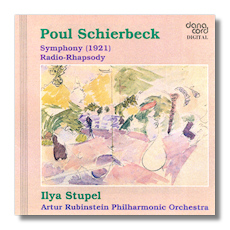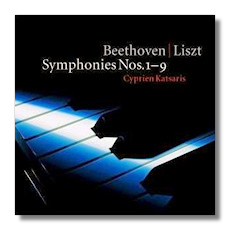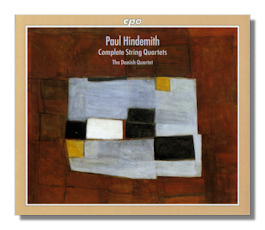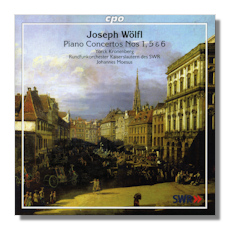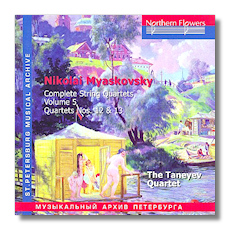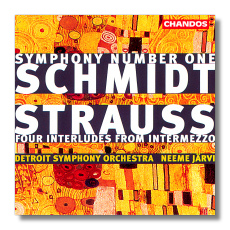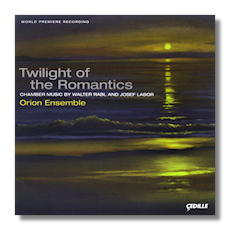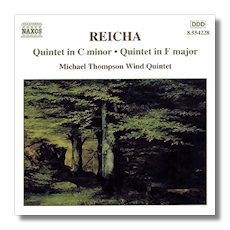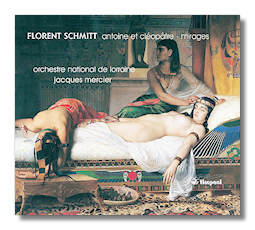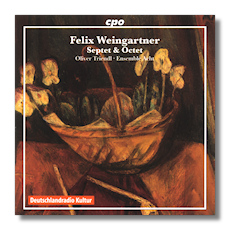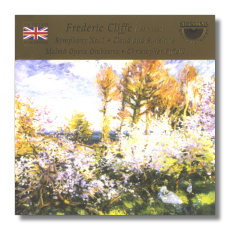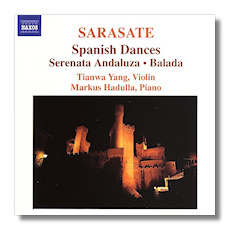
Pablo Sarasate
(1844-1908)
Spanish Dance, Op. 21 #1 "Malagueña"
Spanish Dance, Op. 21 #2 "Habañera"
Spanish Dance, Op. 22 #1 "Romanza andaluza"
Spanish Dance, Op. 22 #2 "Jóta Navarra"
Spanish Dance, Op. 23 #1 "Playera"
Spanish Dance, Op. 23 #2 "Zapateado"
Spanish Dance, Op. 26 #1
Spanish Dance, Op. 26 #2
Balada, Op. 31
Caprice basque, Op. 24
Jota aragonesa, Op. 27
Sérénade andalouse, Op. 28
Tian-wa Yang, violin
Markus Hadulla, piano
Naxos 8.557767
This disc is an explosion of virtuosity. The very young Tian-wa Yang, prize-winning violinist, plays with total control, assurance, beautiful tone, and rhythmic clarity. The Sarasate pieces call for almost every type of fancy violin playing: they are like a catalog of spectacular effects for both left hand and right. But these pieces are more than just rapid displays of technical skill. They present a true musical experience – they lift the spirits and make the listener feel like dancing.















